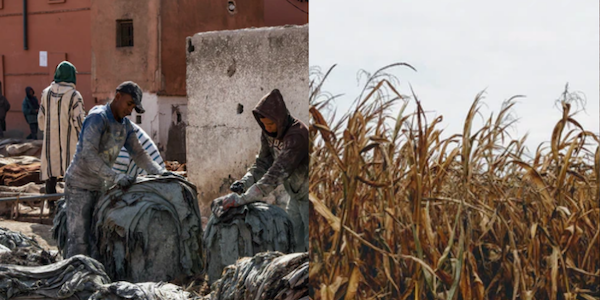Vegan Leather or Real Animal Leather? Sustainability and making fashion more responsible and better for the planet have been on the global environmental agenda for a number of years now. The current pandemic has magnified the issue even more and made creative entrepreneurs and consumers alike be more conscientious about their daily choices.
According to the global fashion aggregator Lyst, the appetite for more sustainable fashion is on the increase, reflected in searches for sustainable fashion brands up by 75 per cent year on year.
One of the hot topics in the industry for a while now has been the debate if faux or often referred to as “vegan” leather is better environmental and sustainable choice than real animal leather?
The answer is complicated with passionate arguments for both “for” and “against”.
Personal preferences aside – let’s take a look at the factual side of the evidence.
REAL ANIMAL LEATHER
It is often cited and said that the animal leather is a by-product of the meat industry. While not all animal leather used in fashion is of a single type and classed as a “by-product”, it is certainly the case for cow derived leather.
The meat and dairy industries are the two largest global industries primarily responsible for huge environmental damage caused over a prolonged period of time now.
There is a popular saying that says “when you know better, you do better.” Perhaps this is the reason behind the decrease in demand for global meat consumption, but despite the gradual decline – it is hard to imagine a future where the meat industry is completely eliminated.
The leather resulting from the animal slaughter is mostly seen to be used in fashion, but it is also used in many other industries and for industrial purposes. If that was not the case the vast amounts of leather skin would be left to dry rot in landfills.
The main reason leather is seen as bad for the environment as a by-product material is mostly due to the way chromed leather (used in fashion and automobile industries) is processed.
In order for the leather to be made usable, it needs to be tanned. In the process, the hides are placed in a chromium salt bath where layers of hair and fat are removed, so the leather can become soft and supple for further use. However, the process involves toxic chemicals that naturally get mixed in with the water. When the remaining toxic water is disposed of, it can wreak havoc on aquatic ecosystems and even negatively impact human health.
As the use of chemicals across all industries is not anything new, global institutions have introduced various legislation regulating the use and disposal of these chemicals. In the EU, we have comprehensive chemicals legislation, spearheaded by REACH and CLP, which aims to ensure a high level of protection of human health and the environment. All tanneries adhere to these strictly and without a fail.
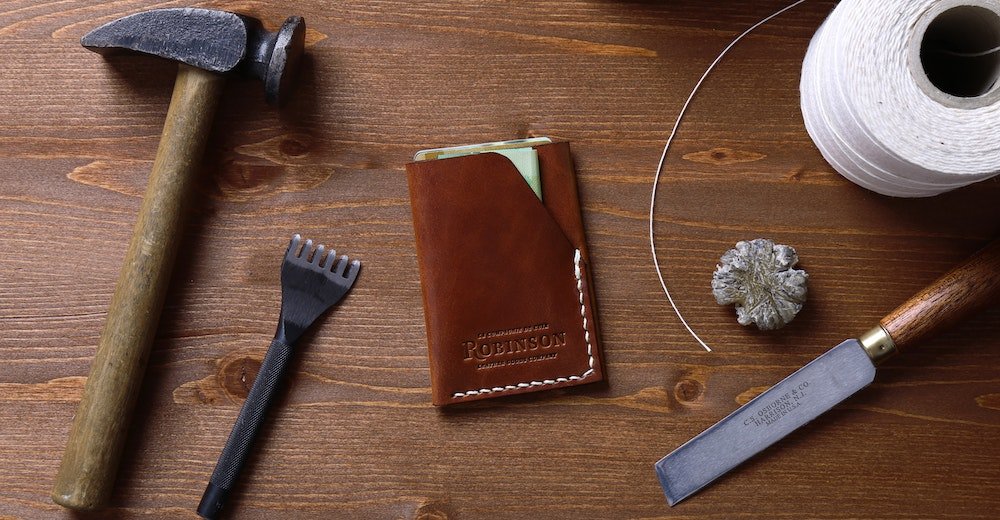
A better nontoxic alternative option is vegetable tanning. Often referred to as veg-tan – this is an ancient practice that uses naturally-derived chemicals such as tannin, that can be found in trees and plants. However, this is less common and though the resulting leather is beautiful and unlike chrome, leathers last longer and ages gracefully.
Another concern relating to leather is that producing real leather also damages environments through deforestation. The leather industry has been responsible for deforestation in large parts of South America which is a major cause of climate change and biodiversity loss. Deforestation is driven by land use, greenhouse gas emissions from animal agriculture (most farm-related emissions come from methane), grazing and the use of feed crops.
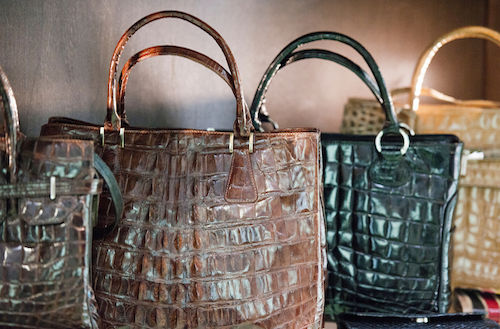
Last but not least, there is the issue of exotic leather. A luxury item favoured by the crème de la crème of fashion brands – this leather is primarily derived from the skins of animals like crocodiles, ostrich, lizards and many more, especially raised in farms for the value if their skin. This certainly comes across as not necessary and inhumane and cannot be justified.
However, let’s look at the positives. On the plus side – leather is one of the oldest materials known to mankind. Some of the benefits of natural leather include:
NATURAL LEATHER BENEFITS
Natural animal leather is long-lasting and ages well. In fact, it gets better with age and is known to acquire a depth of patina and wear pattern that is individual to the user – much like a favourite pair of jeans.
Natural leather is easy to repair and maintain looking good despite multiple wears. It does not draw heavily on resources for laundering and drying and we increasingly see the revival of artisan skills and craftsmen offering repair services for treasured leather goods. Isn’t this aspect one of the core values of the sustainable movement?
Natural leather and its by-products and even the smallest of offcuts left over from the manufacturing process can be repurposed and recycled. At the very end of its life cycle, leather will biodegrade, depending on the type, in between 10 and 50 years.
Last but not least – natural animal leather is versatile – leather can be engineered to be durable enough for furniture yet soft enough for comfort footwear. It has natural comfort – it can regulate temperature, absorb and hold moisture and can be moulded to suit different purposes. It has a natural beauty that unlike many other materials is enhanced with age. And as with all-natural materials, it creates a user experience that is more emotional and luxurious.
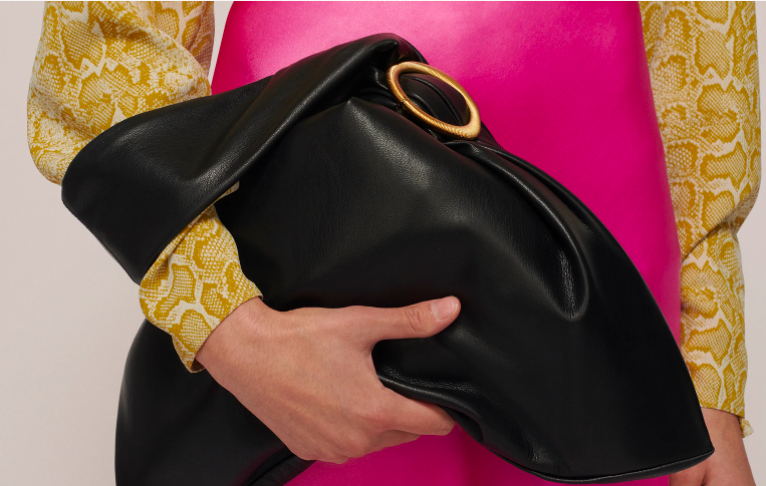
IS VEGAN LEATHER MORE SUSTAINABLE?
With animal welfare and the environment held at the centre of the argument against the use of traditional leather, vegan leather is on the rise. So much so that the vegan leather industry is predicted to be worth up to $89.6 billion by 2025, with a compound annual growth rate of 49.9%, in the forecast period (2019-2025).
Animal rights organizations, like PETA, have taken the stance that no animal by-products should be used in the manufacturing of clothing and accessories. Choosing a stand against real leather, just like people opt against fur, is means to make a move towards alternative materials. However, there are some major environmental concerns to consider these alternatives.
So, what exactly is vegan leather?
Vegan leather is a man-made material that mimics leather but is created from artificial or plant-based products instead of animal hides. It is also known and commonly referred to as “faux” leather.
Most often it is made from two different plastic polymers; polyurethane (PU) and polyvinyl chloride (PVC). Both are most commonly used due to their wrinkled texture, which helps to give the effect of real leather. These petroleum-based plastics come with the same environmental problems as other synthetic materials. Aside from the plastic fibres they release which are the biggest source of microplastic pollution in the ocean, these materials are also not biodegradable.
When you consider the negative environmental impact of extracting fossil fuels, using chemicals, non-natural dyes, and excessive amounts of water to create a non-biodegradable plastic leather – the positive aspects this alternative is meant to have as far as the environment is concerned is questionable.
However, as technology is advancing, scientists have found in recent years innovative solutions to create plastic-free vegan options from living plants and that we know well and in fact consume regularly.
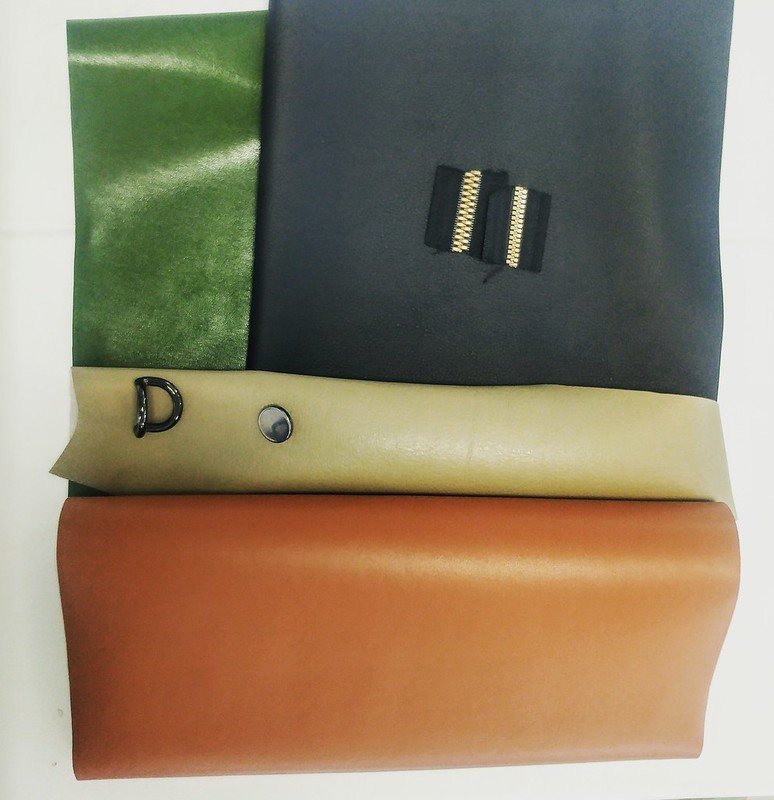
For example, one of the most popular and well-known alternatives is leather made out of Pineapple known as Piñatex, which is made from pineapple leaf waste from the Philippines. Created by London-based company Ananas Anam, it is regarded as the most affordable, plant-based leather option and is currently used by brands like Hugo Boss, on a range of shoes, as well as in H&M’s Conscious Exclusive collection and many others.
Another exciting development is Mirum, created by Natural Fiber Welding. The base for this material is natural ingredients such as waste cork, hemp, coconut and vegetable oil to create biodegradable composites. The fibrous mixtures are compressed with a mould to create the pattern and texture of leather.
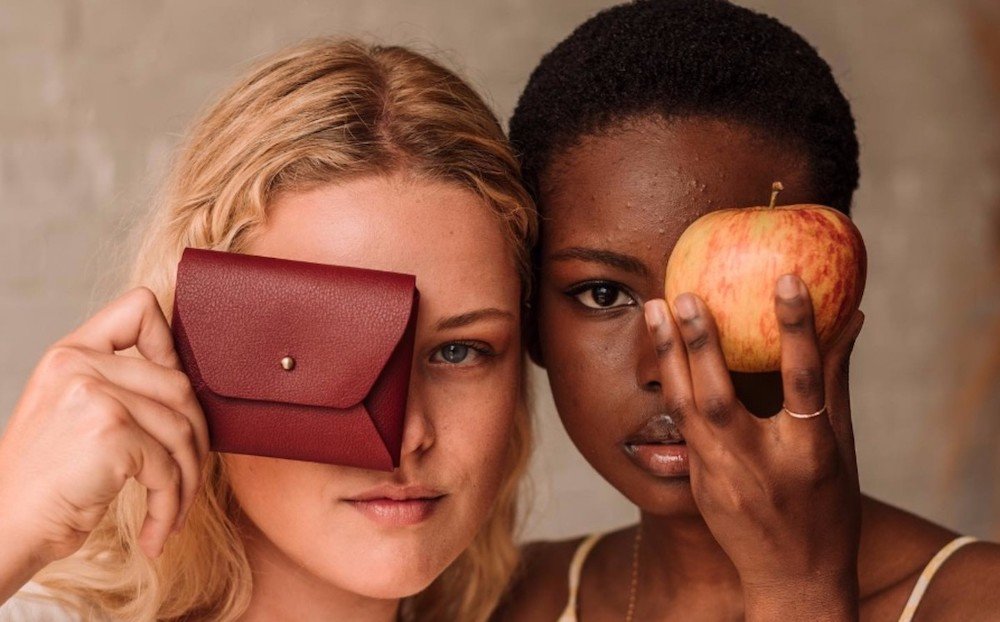
Apples, mushrooms, cactus, corn and mango are other well-known materials used as a base to make leather from. The so-called leather very much resembles fabric, and similar to real leather – it is possible to emboss the texture and achieve quite nice textured print surfaces.
Despite the fact that the raw materials sound nothing like leather, vegan leather has come on leaps and bounds over the past few decades. It is not unusual for well-made vegan-leather products to be mistaken for the real thing.
But before you think that vegan leather made from natural raw materials is perfect, think again. “if you produce a vegan leather from natural materials, then you have an eco-friendly material. The truth is that to hold the fibres together they still need some petroleum-based products to be added to the mix.” says Lorenzo de Leo, founder of LuxuryLeather, an Italian manufacturer of leather goods.
As green and eco as these alternatives may sound, this small addition prevents them from being 100% biodegradable.
“Today there is a lot of confusion about vegan leather, real leather, ecologic leather PU, PVC…etc. We are seeing more luxury brands starting to include natural vegan leather or plastic-free vegan leather for new developments and collections. But they do so as they want to be seen as innovative and above all achieve sustainability targets set by management and create a new revenue source” says Lorenzo.
REAL ANIMAL LEATHER VS VEGAN LEATHER?
So, which of the two wins the argument? Is one better than the other in terms of environmental impact?
The answer is not as simple as real leather versus vegan leather. The reality is that leather is a love-hate story.
Those who love leather, love it passionately and in fact, see it as a slow-fashion material because of its ability to withstand wear and tear and last in your closet for longer than fewer quality materials. Vegetable-tanned options created as a by-product of meat production arguably have the least impact—especially when sourced from sustainable suppliers. Buying this particular type of leather reduces the amount of waste from the meat industry and using vegetable tanning reduces the toxic chemicals released into the environment.
Also, we cannot ignore the fact that with more of us wanting to become more sustainable in fashion and beyond, striving to be zero waste is key. So you could, in theory, argue that not using the animal hides will contribute to more waste being created, as the whole animal will not be used. In other words, converting the leather to a usable and desirable material is simply using up resources.
Those who don’t like real animal leather, on the other hand, focus on the fact that like for like, from sustainability and environmental standpoint, the impact of vegan-leather production can be up to a third lower than real leather. These findings are backed by The Environmental Profit & Loss report developed in 2018 by Kering.
While there are many options and more are in development stages, the real question here is – can vegan leather ever be made to feel as good as and last as long as real animal leather in order to be seen as a real contender and like for like replacement?
In short – it’s not as simple as real leather versus vegan leather. Whichever you decide to use, just make sure to do your research and make informed choices.
Find out who you’re giving your money to, regardless whether you might be the consumer or buyer; decide whether choosing one over the other is something you want to support, regardless of the latest trends or aesthetics. The argument for or against leather is just a symptom to a much bigger problem. Therefore, being aware of the bigger picture and wider aspect of the negative environmental damaged caused by the fashion and meat and dairy industry is paramount to the end results we want to see.

